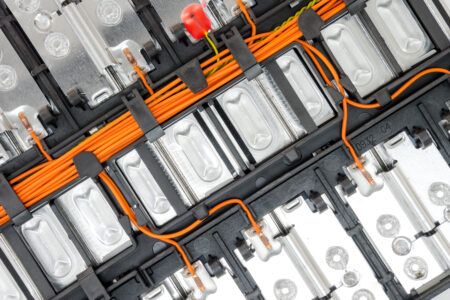Traction batteries and motors in electric vehicles (EVs) are very different to the powertrain components of the internal-combustion engine vehicles they replace. Their meteoric rise will lead to much greater demand for several materials markets which otherwise would see only modest growth.
For example, while the combustion engine and transmission relies heavily on aluminum and steel alloys, Li-ion batteries alone also require a great deal of nickel, cobalt, aluminum, lithium, copper, insulation, thermal interface materials and much more at the cell and pack level.
The new report from IDTechEx, “Materials for Electric Vehicles 2020-2030”, identifies and analyses trends in electric vehicle battery cell- and pack-level materials, and electric traction motor materials, to determine the overall materials demand from the construction and future improvements of these components. For each, a granular breakdown is used to forecast each material required and its market value over the next 10 years.
Alongside the batteries, the demand for electric traction motors will increase rapidly over the next 10 years, not just from the overall vehicle sales but also with the rise of vehicles using more than one motor, specifically in premium cars and heavy-duty vehicles. Critical to materials, the majority of the EV market is using motors with permanent magnet-based rotors. These materials typically contain several rare-earths such as neodymium and dysprosium, both of which have a very geographically constrained supply chain and a volatile price history. Whilst they are in a relatively small quantity in the motor, they can make up a very significant portion of the cost of the motor. We are seeing some manufacturers like Renault using motors with no magnets, whereas Tesla has transitioned to a magnet-based motor for the potential improvements in efficiency which can increase range and hence, reduce the requirements for other critical battery materials.
Another key question in motor design comes from recyclability. Often overlooked at the development stage, when a motor/vehicle reaches end of life, is it easy to remove the expensive, critical materials used in the magnets or windings? Most current designs do not take this into account and whilst we are seeing some manufacturers switching to motors with less expensive or easier to recycle raw materials, the vast majority of the market is focussing on incremental improvements to the efficiency of current designs.





